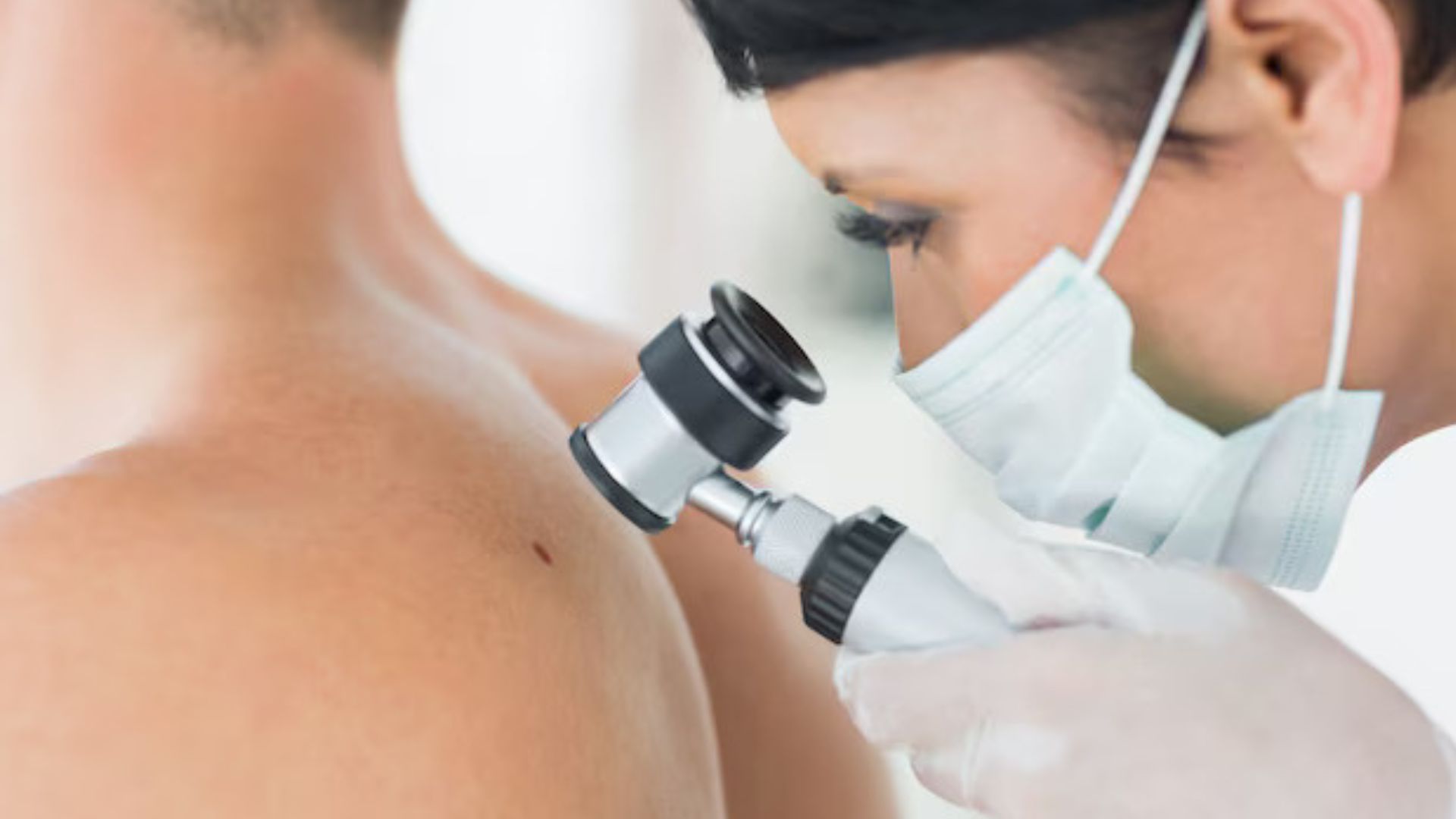

Which 5 criteria are used to detect melanoma?
ABCDEs are not just alphabetical; they represent a critical checklist for spotting the warning signs of melanoma: Asymmetry, Border irregularity, Colour variation, Diameter over 6mm, and Evolving shape or size. These are important for detecting early signs of melanoma and initiating treatment at the right time.
Dermatologists and other physicians use the ABCDE rule to assess moles and lesions for potential melanoma. The ABCDEs are visual characteristics that help in distinguishing between normal moles and cancerous melanomas. Understand the criteria and their importance.
ABCDEs of Melanoma
The ABCDEs of melanoma are key warning signs used to help identify potentially cancerous moles or skin lesions. This guideline can aid in the early detection of melanoma, the most serious type of skin cancer.
- A – Asymmetry: One half of the mole does not match the other half in shape, which may suggest abnormal cell growth.
- B – Border: Melanomas often have uneven, scalloped, or poorly defined edges, unlike benign moles, which usually have smooth, regular borders.
- C – Colour: A mole with multiple colours (shades of brown, black, red, white, or blue) or uneven distribution of colour can be concerning.
- D – Diameter: Melanomas are typically larger than 6 millimetres (about the size of a pencil eraser), although they can be smaller when first detected.
- E – Evolving: Any change in size, shape, colour, elevation, or another trait, or the appearance of new symptoms like bleeding, itching, or crusting, may be a warning sign.
Early detection is crucial, as melanoma is highly treatable in its early stages. Regular skin self-exams and dermatologic checkups can lead to early diagnosis and significantly improve outcomes.
Why is Melanoma Diagnosis Important?
Diagnosis of any condition is important and should be taken seriously because early detection leads to better results. The treatment can be done on time, and the survival rates will eventually increase. Here is why melanoma diagnosis is important:
- Early diagnosis of melanoma is crucial because it is the most dangerous type of skin cancer, with a high potential to spread quickly if not caught early. When detected in its early stages, melanoma has a high cure rate, but if it spreads to other parts of the body, the prognosis significantly worsens.
- Effective treatment options are the biggest benefit if the condition is diagnosed early. Early diagnosis allows for less invasive treatments, such as surgical removal of the melanoma and surrounding tissue, which can be highly effective.
- The risk of the cancer spreading to other organs and tissues is reduced, leading to a better prognosis. When melanoma is diagnosed before it has spread (localised disease), it is highly treatable with surgery, and the five-year survival rate is close to 99%.
- Early diagnosis also allows healthcare professionals to make informed decisions about the best course of treatment, including surgery, radiation therapy, or other therapies.
If you are having doubts related to melanoma and its removal, the following information might help.
Melanoma Removal: How Quickly Must It Be Done?
Melanoma should be removed as soon as reasonably possible after diagnosis. While there isn’t a strict time frame, ideally, melanoma removal should occur within 4-6 weeks of diagnosis. Delays can allow the cancer to potentially spread, making treatment more complex and increasing the risk of recurrence.
The aggressiveness of this cancer makes it essential to contact a healthcare professional as early as possible after performing a skin examination or detecting melanoma signs and symptoms.
One of the most effective treatments for melanoma is Mohs surgery. For superficial melanomas, Mohs surgery, which removes thin layers of tissue until cancer-free margins are reached, is ideal. The time for Mohs surgery can vary, potentially taking several hours, depending on the size and depth of the melanoma.
If melanoma is deeper than 1 mm or if there are other risk factors, a sentinel lymph node biopsy may be performed to check for cancer spread to lymph nodes. Regular checkups or monitoring allow for the detection of any recurrence or new melanomas.
Visit a nearby dermatologist for regular monitoring or in case of a suspicious growth, because they can guide you better.
Final Thoughts
The schools taught us ABCDEs, and they not only have educational importance but also health importance. The ABCDEs of melanoma are essential to understand and grasp as soon as possible. The earlier you detect these signs, the higher the survival rate will be.
Melanoma is an aggressive type of skin cancer. These 5 criteria (asymmetry, border irregularity, colour variation, diameter over 6mm, and evolving shape or size) are essential to understand and learn.

